When Osamu Tezuka Redefined Anime
Plus: a Hubley classic and animation news from around the world.
Welcome back to the Animation Obsessive newsletter! We’re glad to have you with us. Here’s our agenda this time:
One — Tales of a Street Corner and Osamu Tezuka’s remaking of anime.
Two — global animation news.
Three — Faith and John Hubley’s little-known satire Zuckerkandl!
Four — the last word.
If you’re new to our newsletter, we encourage you to sign up! It’s free and takes zero effort. Catch us in your inbox every Sunday:
With that said, here we go!
1. Tezuka and Mushi and Street Corner
Osamu Tezuka created Astro Boy and became one of Japan’s most popular artists. Some say he created manga itself, or even anime — but those claims are more myth than reality. The “God of Manga” was part of a bigger movement, and Japanese animation was in full swing before Tezuka joined it.
Still, it’s true that Tezuka changed animation in Japan — in ways we feel today.
A lot of it comes down to his Astro Boy series, the first major TV anime. Negotiating to get the thing made in the early ‘60s, he lowballed its budget to a shocking 550,000 yen per episode. The production buckled accordingly. As Matt Alt writes in his recent book Pure Invention:
The beloved hallmarks of Japanese animated fare — the striking of theatrical poses, the lingering freeze-frames, the limited ranges of motion — evolved from desperate cost-saving workarounds […] They are the direct result of that fateful choice Tezuka made so many decades ago.
But these pragmatic decisions derived from artistic ones. “Right from the beginning, Mr. Tezuka was drawn to the beauty of limited animation on a conceptual level,” his collaborator Sadao Tsukioka later said.1 The flat, graphic style and abstract motion of Tezuka’s anime was an aesthetic first. See Tales of a Street Corner, one of his earliest films.
Street Corner is a wordless animation built on design. It takes place in an alley full of mice, lamps, plants, insects, people and especially posters — all of them conscious. Although large sections of the film barely animate, the rich colors and inventive shapes carry it. Texture plays an important role as well. Long, mesmerizing stretches are dedicated just to the posters and their modernist look.
Eventually, fascist posters get introduced. War reduces the alley to rubble.
Street Corner was a key product of Japan’s “UPA boom,” as one commentator dubbed it. This boom emerged in the late ‘50s and early ‘60s. When UPA’s cartoons hit Japan, their stylish design and purposely unrealistic motion wowed Japanese animators accustomed to the Disney style. This was especially true of John Hubley’s Rooty Toot Toot, which Tsukioka cited as one of Tezuka’s main influences on Street Corner.
It took Tezuka a while to get to that film, though. Just a few years before Street Corner, he was a busy manga artist who didn’t even run an animation studio.
In the late ‘50s, Tezuka got his start in animation at Toei Doga. The studio brought him aboard to work on Journey to the West, adapted from his manga. By this point, Toei itself was in the early stages of the UPA boom. Makoto Nagasawa, an animator on Journey, recalled borrowing a few tricks from cartoons like Magoo’s Puddle Jumper. Despite that, Tezuka was let down by the final film and its deviations from his plan.
“I learned in a hard way,” Tezuka later wrote about Journey, “that the more specialized skills the project requires, there is a danger of the project losing its personality.”
The rest of the Journey team wasn’t happy, either — for a different reason. Toei’s hours and pay were already miserable, and Journey was a breaking point. Matt Alt again:
To make the film, each of the animators had been obligated to put in more than ninety hours a month of unpaid overtime to meet schedules. Now that the film was finished, they formed a union to petition the management for better working conditions.
In August 1960, Journey premiered. The following June, Osamu Tezuka Productions grew an animation branch. Tezuka, now somewhat soured on Toei, had expanded his manga studio to house animators. The new division soon took the name Mushi Production — and a host of Toei alumni joined. One was a young Rintaro, who remembered that his salary jumped from 8,000 yen (Toei) to 21,000 yen (Mushi).
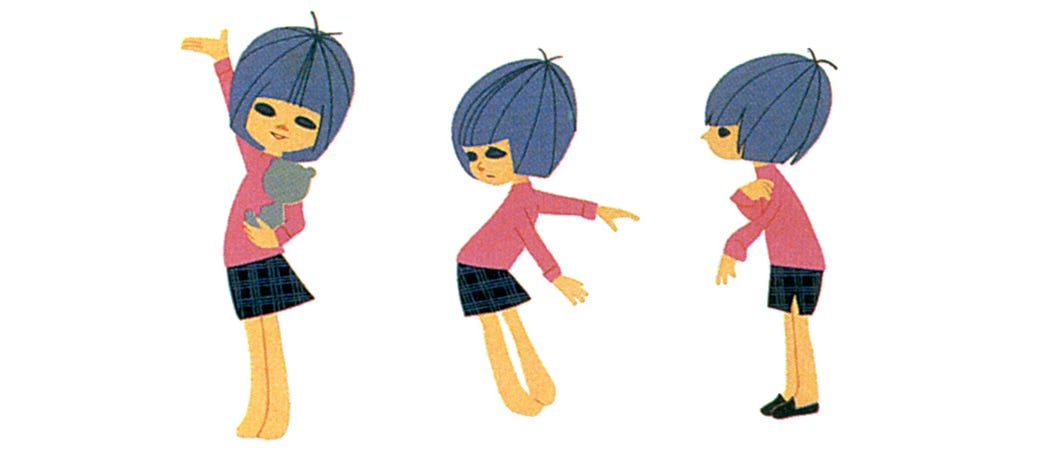
Tales of a Street Corner was meant to test and prove what Tezuka’s new team could do, according to anime historian Jonathan Clements.
Although Tezuka planned, supervised and funded the film, he handed the director’s chair off to another member of Mushi. Street Corner would fully embrace the “limited-animation” aesthetic. But what Tezuka meant by that term wasn’t quite clear, and may have been shifting in real time. You might say that Tezuka and UPA ultimately used the same words to describe different things, as one Japanese scholar has argued.
Tsukioka compared American limited animation to kabuki, where restriction lends form. That’s certainly on display in Street Corner. The animators worked creatively as well — Gisaburō Sugii, an ex-Toei staffer, recalled experimenting with smears. But you catch glimpses of the other meaning of limited animation, too. And that’s Tezuka’s pragmatism, and the cheapness and corner-cutting that came to be associated with it.
The design in Street Corner sings, but some of the animation is so basic, so reused, that it couldn’t work in any other context. (The production was a crunch-and-rush affair, Clements notes.) In Tezuka’s TV anime after Street Corner, you saw what his new breed of limited animation looked like without the design genius of that first film.
Despite their huge success, shows like Astro Boy helped to give ‘60s anime a reputation as rudimentary. It persists to this day. Even in Japan, some have called these shows “electric kamishibai” — in reference to the Japanese street performers who entertain children by narrating over a series of illustrated slides. Hayao Miyazaki later blamed Tezuka’s Astro Boy lowball for the ensuing decades of under-budgeted TV anime.2

So, what started as art became commerce. In Tezuka’s hands, the UPA boom and its limited animation proved to be a double-edged sword. Mushi and Street Corner initially lit a fire under Toei, per Makoto Nagasawa. This helped to push Toei further into UPA aesthetics, with beautiful results. But Mushi’s production values gradually helped to drag down those of the whole industry.
And yet, while Tezuka cheapened anime, he also opened the door for TV anime masterpieces like Heidi.
In the end, what you have is a complicated story — one that’s wound itself around Japanese animation for almost 60 years. Tezuka was neither the creator nor the destroyer of anime. He was a person.
Miyazaki once said that Tezuka’s early manga showed the contradictions of the modern world. In that work, modernity meant “prosperity and mass consumption,” but also “the invention of destruction.” It was “scary, absurd, painful and hopeful.” You could argue that Tezuka’s anime embodied those contradictions. And, in Tales of a Street Corner, you see flashes of what was, what would be and what might have been.
2. News around the world
Japan’s fight to produce anime outside Tokyo
Around 90% of Japan’s animation firms are headquartered in Tokyo, per a recent report. In the United States, even Los Angeles likely can’t boast a similar monopoly. Still, a news item this week illustrated the subtle, ongoing effort to decentralize anime.
Since May, a small studio called RICE FIELD has run animation classes in Miyazaki Prefecture, a declining rural area. (For reference, when a government program offered people cash to relocate to Miyazaki in 2019, it had zero applicants in its first two months.) This week, the city of Kobayashi signed a deal with RICE FIELD to boost anime production in the region. It’s part of a broader attempt to revitalize Miyazaki.
Asami Tahara, president of RICE FIELD, said that her company “was initially targeting housewives.” Young people got more heavily involved over time. RICE FIELD’s short list of finished work includes a TV spot targeted at discrimination against those who’ve contracted or recovered from COVID-19, a problem in Japan.
It’s worth mentioning that Miyazaki isn’t the only prefecture courting animation. Back in June, Kōchi Prefecture welcomed its very first anime company — Studio Eight Colors.
BUSINESS: A South African series rethinks IP
In a fascinating article this week, Kidscreen looked at the growing push to keep animated IP rights in the hands of creators. Traditionally, getting animation on TV or streaming has meant losing the rights to it. (Craig McCracken, who owns none of his shows, tweeted a painful reminder about the arrangement a few months ago.)
One series that’s rethinking things is Garbage Boy and Trash Can — the upcoming Cartoon Network Africa show. It’s by Ridwan Moshood of Nigeria, whose Garbage Boy pilot won a Cartoon Network contest a few years back. He co-founded a new studio in South Africa last year. This June, he got the greenlight for the Garbage Boy series.
Because Moshood owns a studio, he has more leverage with the rights to Garbage Boy — holding 40% of it. Per Kidscreen, Moshood’s view is straightforward. “I’m the creator of the show,” he said, “and it’s only right for me to retain a large amount of the IP.” The remaining 60% is split between co-founders Mike de Seve and Nick Wilson.
Garbage Boy is due out next year. It keeps making headlines in Cartoon Network’s effort to grow local production in Africa — and we’ll keep reporting on it as more news appears.
Best of the rest
Bryan Korn, a producer on Netflix’s Hilda, tweeted out the little-seen 1997 pitch bible for SpongeBob on Wednesday. Find the whole thing via his Scribd account.
Fernando Ruiz, sometimes called the father of Mexican animation, passed away on Friday at the age of 79.
In an interview this week, Hayao Miyazaki praised his son Gorō’s Earwig and the Witch. “By not drawing with a pencil and doing things in CG instead, he’s been released,” he said. The film opens in Japanese theaters on August 27.
COVID-19 is resurging in Japan, which just hit a new case high. In the anime industry, 12 cast members from Idolmaster SideM tested positive this week. Makoto Nonomura (Pom Poko) is hospitalized with the disease.
Also in Japan, Evangelion: 3.0+1.01 broke Amazon streaming records, per a report on Tuesday.
In another big Amazon story, the American blockbuster Hotel Transylvania 4 will go straight to Prime Video. Amazon picked up Sony’s film for “over $100 million,” Variety reported Monday.
In India, the live-action studio Applause Entertainment is getting into animation by partnering with Amar Chitra Katha, a comic publisher.
Flee will premiere in American theaters on December 3. The animated documentary, a likely Oscar contender, tells the true story of a gay Afghan man who escaped his home country.
Green Snake has emerged as the biggest animated movie so far in China’s all-important summer film season, now in its final leg. The resurgent pandemic is crushing overall theater revenue. (Meanwhile, streamer Bilibili is booming.)
Lastly, a big week in Russia. Soyuzmultfilm is now a joint-stock company — the government will retain 25% of its shares. There’s also a Masha and the Bear feature film on the way, and the YouTube cartoon series Luntik just hit 10 billion views.
3. Quick look back — Zuckerkandl!
Once Faith and John Hubley married in the mid-1950s, they spent more than two decades making cartoons together, one per year. Probably only Moonbird still has a big name. That’s unfair, though, because the Hubleys’ deep cuts were often as good as their showpieces. See Zuckerkandl! (1968), one of their best and most off-the-radar films.
Zuckerkandl! is a brutal satire built around a lecture. A follower of Alexander Zuckerkandl, a made-up philosopher who allegedly studied under Freud, sells us on the disentangled life. “Our aim in life, says Dr. Zuckerkandl, is to get through it,” he says. The best way to do that is to settle into habits, feel nothing and live unconsciously.
While the lecture continues, the Hubleys dart between the lecture hall, Zuckerkandl’s life and examples of his philosophy. Zuckerkandl calmly watches a man drown and another fall off a cliff. Refugees struggle toward a walled fortress — only to be gunned down, as tourists lounge on the beach within. The genius of Zuckerkandlism is that it “supplies mankind with the reasons for doing what it is doing already,” we learn.
Although it’s aimed at Vietnam-era politics, Zuckerkandl! still feels horrifically present. It’s also still funny. The lecture is a disaster — the speaker, who misuses quote after quote, can’t tell how ridiculous he sounds. The audience keeps laughing, convinced it’s a joke. It’s like the world’s worst TED Talk is falling apart before your eyes.
The rustic visuals are great, too. Per the late Michael Sporn, the art was drawn “wholly with Sharpie markers and Design markers.” Luminaries like Tissa David worked on the animation, which was cut out of paper and attached to cels with glue. The look is so good that it held up in the film’s book release — a book that Thornton Wilder called “the most chilling exercise in nihilism [he] had come across since reading Céline.”
With the help of our friend Rae H. (or tiny crow), we’ve tracked down a copy of Zuckerkandl! for you below. It’s hard to imagine a more timely cartoon:
4. Last word
That’s it for this week’s edition! Thanks for reading. Next Sunday, we’ll be back with another batch of animation highlights from around the globe.
One last thing. Our most popular tweet this week was a clip of Satoshi Kon, where he talks about Darren Aronofsky’s “homages” to Perfect Blue in Requiem for a Dream. This borrowing is widely discussed, but what Kon thought of it is less well known. Apparently, he wasn’t amused. As more than one person noted on Twitter, you have to wonder what Kon would’ve said if he’d been alive for Black Swan.
Hope to see you again soon!
Tsukioka made this remark, and several more cited in the article, during a 2016 interview. We’re quoting an English translation of that interview from the ever-informative animation blog On the Ones.
Miyazaki’s remarks appear in Starting Point: 1979–1996. In the same piece, Miyazaki writes that he hated Tales of a Street Corner for its “cheap pessimism.” He recalls his disgust that Tezuka was “consciously and deliberately trying to depict some apocalyptic beauty and impress everyone.” He felt the same way about most of Tezuka’s anime.



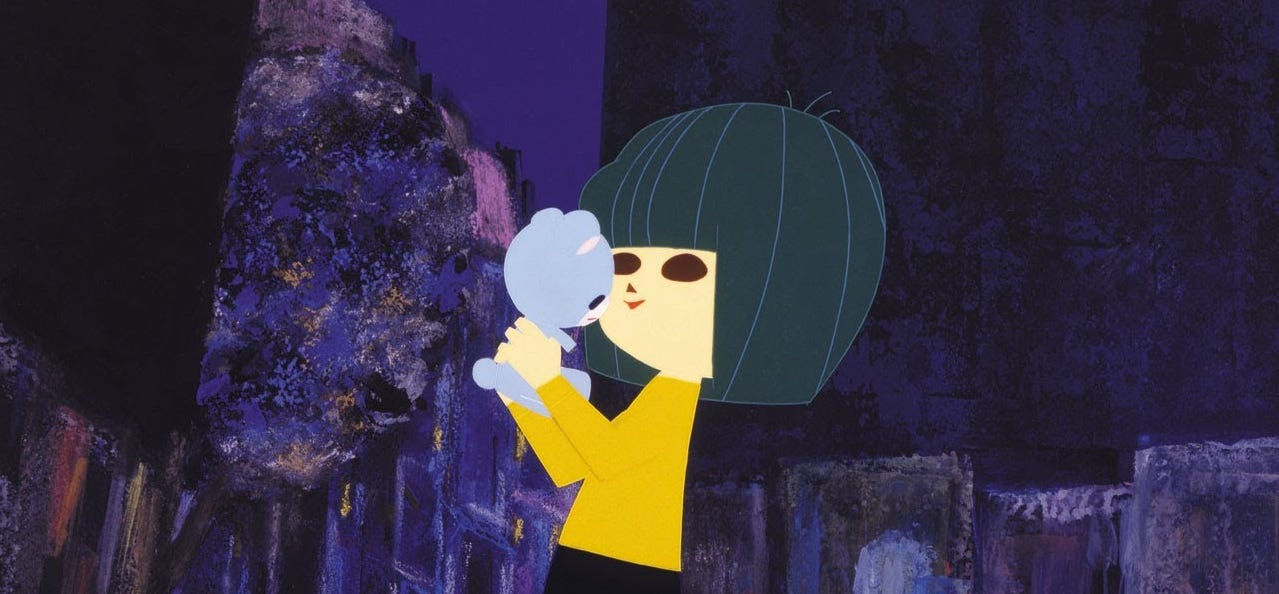
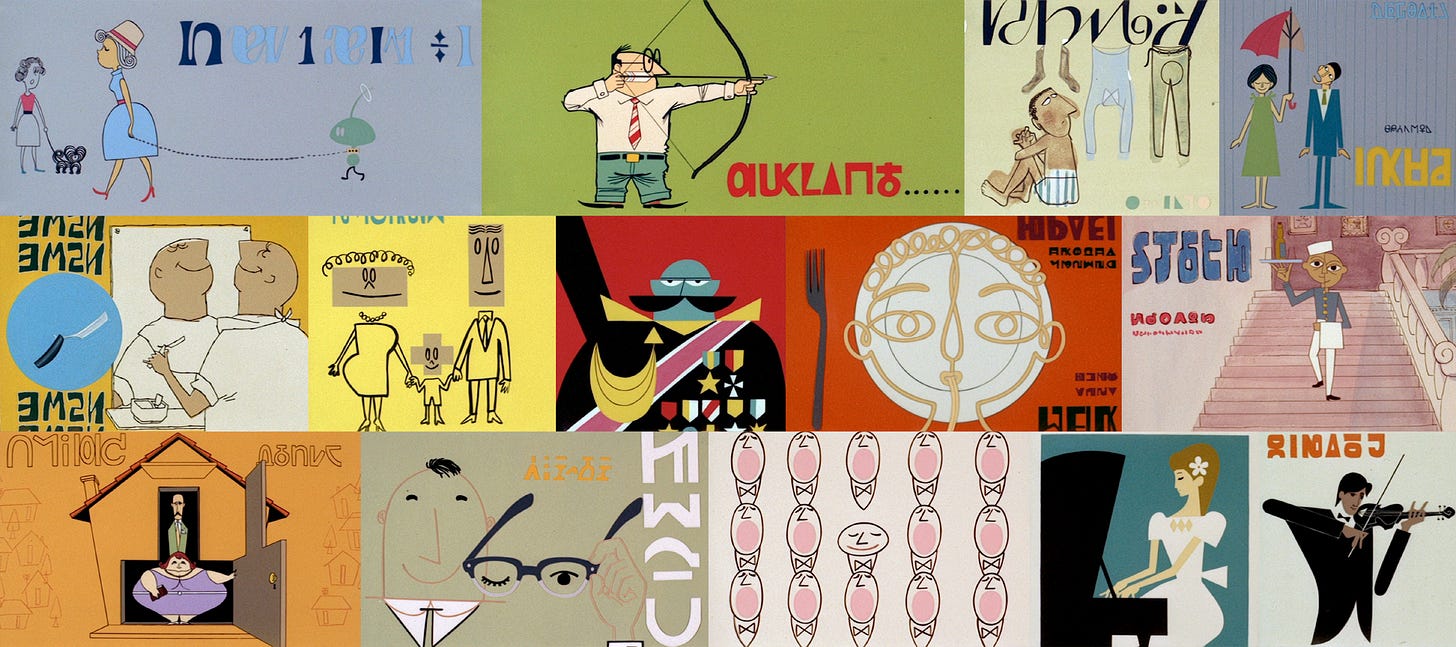
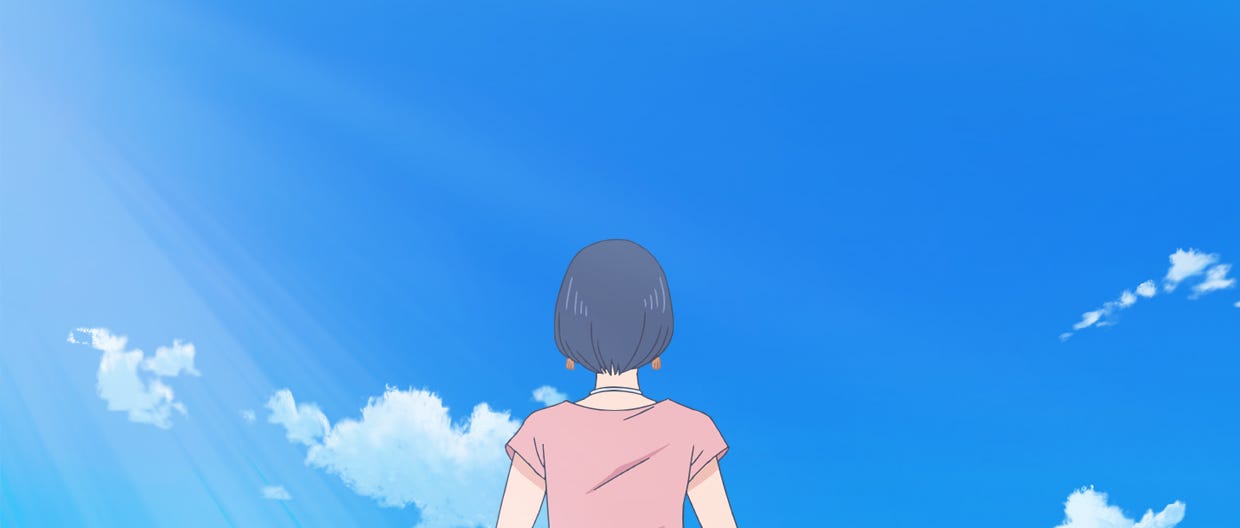
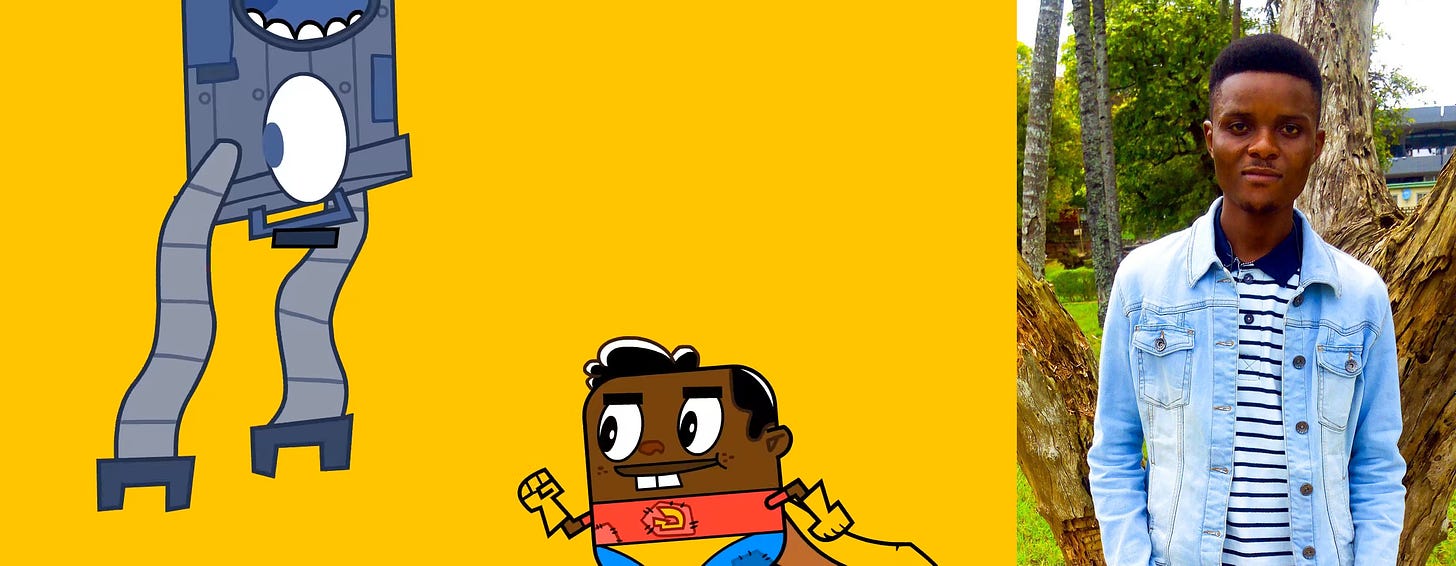
These vintage films that I'm discovering through your weekly shares! Moonbird is magical, and Zuckerland. Wow. I got chills by the end; that beachscape with zoned out humans on their devices, the looming screens. Totally, and sadly, so today. I'm looking forward to watching more films by the Hubleys; could be a new obsession.
Lastly, with regard to Miyazaki praising his son's use of CGI—unless I'm missing something, and if he's speaking in earnest—I was surprised by this given his apparent distaste of computer-generated animation https://www.eteknix.com/hayao-miyazaki-calls-ai-crafted-animation-insult-life (granted, in this example he was specifically critical of AI-generated grotesquerie).